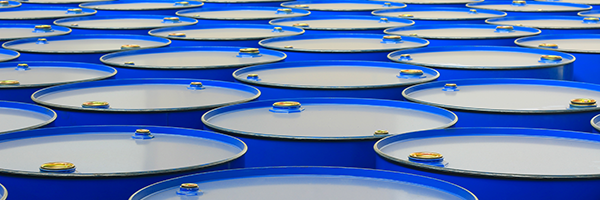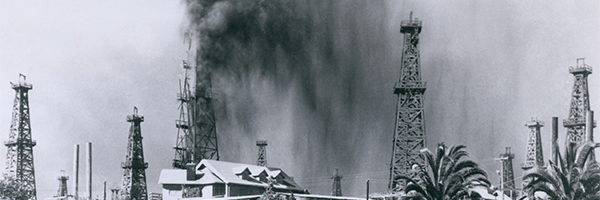
February 28, 2023 | Daily JAM, Jubak Picks, Short Term, USO |
Oil prices fell again in February with crude dropping another $2 a barrel on the month. Crude prices really didn’t show much of a trend in February as worries over an economic slowdown caused by higher interest rates battled signs of tighter supply. The reading range for the month was the smallest since July 2021. Signs of increased demand from China and the continued bite of sanctions against Russia point to gains for oil in coming months.

December 5, 2022 | Daily JAM, Morning Briefing |
As of 12:45 p.m. on Monday, December 5, U.S. benchmark crude West Texas Intermediate was down 1.63% to $76.68 a barrel. International benchmark Brent crude was down 1.39% to $84.38 a barrel. Brent is now up 11% this year but down from $120 a barrel in June. The market is a battleground today between cuts to supply and worries about a slump in global demand.

December 3, 2022 | Daily JAM |
On Friday, the European Union agreed to impose a $ 60-a-barrel cap on all purchases of Russian oil. Pay more than that and sanctions kick in that include a ban on shipping and insurance on any oil shipments when the oil has been purchased above the $60 a barrel price. That would have produced enough chaos on its own since the announcement of the cap came before oil, insurance, and shipping companies saw the full details of the sanctions. That effect is that nobody will be quite sure what purchases will trigger what sanctions when trading begins on Monday morning. One possibility is that conservative company lawyers will decide not to do a deal when they can’t figure out the consequences. At the least, that problem will slow the market on Monday. And then today, Russia announced that it will not accept the $60 per barrel price cap for its crude oil Nobody has any idea what that means (but I’ll give you my read below) Suffice it to say, that oil market chaos is a possibility

November 29, 2022 | Daily JAM, Morning Briefing |
Today, November 29, U.S. crude benchmark West Texas Intermediate traded at $78.45 a barrel. International benchmark Brent crude was at $83.26 a barrel. A month ago on October 28, West Texas Intermediate closed at $88.11 a barrel and Brent at $95.94. That price plunge is the background for Sunday’s regular meeting of OPEC+ oil ministers. Market speculation points to a strong chance of another cut in production following on the cut announced at the group’s October meeting. At the least, oil analysts say, OPEC+ will extend the October production cuts through the end of 2023.

October 10, 2022 | Daily JAM, Morning Briefing |
On Monday Russia launched “a massive strike (the words of Russian President Vladimir Putin) on civilian infrastructure, including crowded train stations, in Ukraine in retaliation for the explosions Saturday that destroyed a crucial ridge linking Russian-occupied Crimea to Russia. Russia has blamed Ukraine for the destruction of the bridge. The Ukrainian government has, so far, not claimed responsibility for the action, but U.S. sources are telling the Washington Post and the New York Times that the destruction was the work of Ukrainian special forces. The Russian attacks were horrifically indiscriminate. According to the Washington Post, the attack caused electricity outages and disrupted water supplies in cities across Ukraine. For a third night in the past week, a residential apartment building in the southeastern city of Zaporizhzhia was hit. In Kyiv, the missiles caused heavy explosions around 8:15 a.m., leaving vehicles in flames near Taras Shevchenko Park — on a road often jammed with rush-hour traffic. Besides a general increase in fear and uncertainty–the VIX “fear index claimed 5.99% to 33.24 as of noon in New York on Monday, October 10–in the financial markets, I think investors should focus on the implications for the oil market and oil prices.

October 4, 2022 | Daily JAM, Morning Briefing |
Should be an interesting day in the oil markets tomorrow, Wednesday, October 5. After a rally in oil stocks and oil prices themselves on Monday on an informed rumor that OPEC+ was considering a cut in production of 1 million barrels a day at its Wednesday meeting, today the rally kept going as speculation extended to the possibility of a cut in production of as much as 2 million barrels a day. U.S. benchmark West Texas Intermediate ended up 3.46% to $86.52 a barrel. International benchmark Brent rose 3.18% to $91.69 a barrel.

September 6, 2022 | Daily JAM, Morning Briefing |
I hope that President Joe Biden got a T-shirt on his August trip to Saudi Arabia. You know one that says “I went to Saudi Arabia and all I got was this lousy T-shirt.” Because the U.S. President sure didn’t get a surge in OPEC oil production. In September the oil cartel plus Russia agreed on a piddling 100,000 barrel a day increase in production in response to pleas from President Biden and other Western leaders to an increase in oil production to combat soaring energy proved. On Sunday, OPEC took back that entire increase

August 12, 2022 | Daily JAM |
Ho, hum. Another day another big upside move in stocks. Because we all know that the inflation rate has peaked and is coming down. After all the headline CPI inflation number on Wednesday, August 10, told us so. In July all-items inflation ran at a year-to-year rate of just 8.5%, down from the 9.1% rate in June, and below the 8.7% rate economists were expecting.
Today, August 12, the Standard & Poor’s 500 index w up 1.73%, the Dow Jones Industrial Average was higher by 1.27%, and the NASDAQ Composite ended the day up 2.-5%. The NASDAQ `100 closed higher by 2.06%. The Russell 2000 small-cap index gained 2.09%.
Given, however, that the bulk of the lower-than-expected inflation rate in July resulted from a huge drop in gasoline prices, it’s important to take a look at where oil prices (and the price of gasoline at the pump) might be headed. In the short run there’s nothing so likely to derail this rally than a return to $4.00 a gallon PLUS gas prices.

August 5, 2022 | COP, Daily JAM, Jubak Picks, PXD |
I’ve seen several comments on the site asking this question. I assume we’re talking about oil stocks in the short- and medium-term. In the long term, I think it’s clear that you should be thinking about selling these out of your portfolio at a profit (of course) whenever you can. Demand for oil will fall in the long-term–defining long-term as 5 years or more–or we can all count on figuring out how to survive 120-degree (Fahrenheit) heat. Today, August 5, is a good synopsis of what’s going on with oil and oil stocks in the short- and medium-term.

August 3, 2022 | COP, Daily JAM, Jubak Picks, PXD |
As of 2 p.m. New York time today, August 3, U.S. benchmark West Texas Intermediate crude was down 3.30% to $91.30 a barrel. International benchmark Brent fell 3.07% to $97.45 a barrel.
The drop was a result of Wednesday data from the U.S. Energy Information Administration showing that U.S. crude and gasoline inventories unexpectedly rose last week. U.S. crude supplies were up 4.5 million barrels in the week ended July 29, while gasoline supplies rose 200,000 barrels. This comes at a time when gasoline inventories usually fall on high seasonal demand. This report was, for the day, more than enough to offset the announcement of a smaller than expected increase in oil production by OPEC+ of just 100,000 barrels a day for September.

July 20, 2022 | Daily JAM |
There are the base-load power plants that run all the time and meet the bulk of normal electricity demand. And then there are the power plants that are only intermittently called into service when demand spikes. In the United States the majority of the plants used to meet “spiking” demand run on natural gas. So you can imagine what something like the current heat wave now gripping much of the country does to electricity demand for air conditioning and to demand for natural gas.

July 18, 2022 | Daily JAM, Morning Briefing |
I sure hope President Joe Biden got a T-shirt from this recent trip to Saudi Arabia. You know the kind. One that says, “I went to Saudi Arabia and all I got was this lousy t-shirt.” Because he sure didn’t get a deal for increased oil production from the Saudis.









